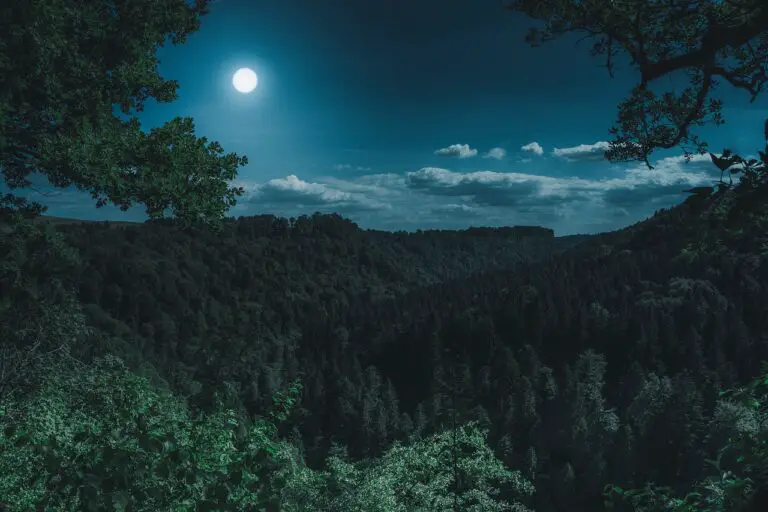Why Hike by Moonlight?
Ever hiked at night without a headlamp? If timed right, the moon can light your way, casting enough glow to navigate safely while enhancing the adventure. But not all moonlit hikes are created equal—lunar illumination varies depending on the phase, time of night, and terrain.
Understanding the moon’s cycle can help you plan night hikes more effectively, reducing reliance on artificial light while immersing yourself in nature’s rhythm.
Moon Phases and Their Impact on Night Hiking
- Full Moon: Maximum Visibility
- Best for night hiking—bright, shadow-casting light.
- Ideal for open trails, ridges, and desert landscapes.
- Reduces the need for artificial lighting, preserving night vision.
- Waxing & Waning Gibbous: Almost Full, Still Bright
- Provides substantial illumination, especially after moonrise.
- Works well for moderate forested trails where tree cover is light.
- First & Last Quarter: Partial Illumination
- Produces softer light, requiring occasional headlamp use.
- Good for trails with reflective surfaces like snow or sand.
- Waxing & Waning Crescent: Low Visibility
- Minimal light—best for stargazing rather than hiking.
- If hiking, stick to familiar, well-marked trails with extra lighting.
- New Moon: Total Darkness
- Not ideal for night hiking unless in well-lit urban trails.
- Best for astrophotography or enjoying clear starry skies.
Using Lunar Illumination to Your Advantage
- Plan by Moonrise & Moonset: Check moonrise times to ensure light coverage for most of your hike.
- Choose Open Terrain: Moonlight is strongest in meadows, ridgelines, and deserts compared to dense forests.
- Adapt Your Eyes: Give your eyes 20-30 minutes to adjust to low light for better natural visibility.
- Use Minimal Artificial Light: Rely on red-light headlamps to preserve night vision while hiking.
The Magic of Moonlit Hiking
Hiking under moonlight transforms the trail experience—familiar paths feel otherworldly, wildlife becomes more active, and the quiet stillness of the night creates a sense of calm. By understanding lunar illumination patterns, you can turn your next night hike into a mesmerizing adventure.

